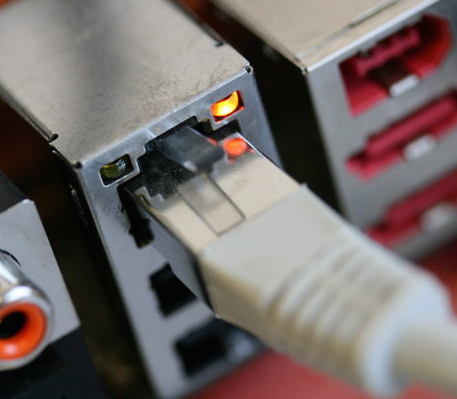Analysis of CryptFile2 Ransomware Server
Download ASERT Threat Intelligence Report 2016-06 here This report describes several elements of a ransomware staging system using the Nemucod malware to deliver CryptFile2 (aka Hydracrypt.A and Win32/Filecoder.HydraCrypt.C) ransomware, an ongoing threat since at least mid-March of 2016. This report reveals TTP’s (tactics, techniques, procedures) of threat actors, including insight derived from limited interactions via e-mail. […]The New Tech Economy in Cloud Networking
In the 1950s, the introduction of jet engine technology revolutionized air transport, allowing for the transport of goods and people across oceans far more quickly than with traditional propeller-based aircraft. A new airline industry on a global basis arose from the jet engine revolution.
Worth Reading: DevOps and what’s in a name
The post Worth Reading: DevOps and what’s in a name appeared first on 'net work.
Is The Rise Of SD-WAN Thanks To Ethernet?

SD-WAN has exploded in the market. Everywhere I turn, I see companies touting their new strategy for reducing WAN complexity, encrypting data in flight, and even doing analytics on traffic to help build QoS policies and traffic shaping for critical links. The first demo I ever watched for SDN was a WAN routing demo that chose best paths based on cost and time-of-day. It was simple then, but that kind of thinking has exploded in the last 5 years. And it’s all thanks to our lovable old friend, Ethernet.
Those Old Serials
When I started in networking, my knowledge was pretty limited to switches and other layer 2 devices. I plugged in the cables, and the things all worked. As I expanded up the OSI model, I started understanding how routers worked. I knew about moving packets between different layer 3 areas and how they controlled broadcast storms. This was also around the time when layer 3 switching was becoming a big thing in the campus. How was I supposed to figure out the difference between when I should be using a big router with 2-3 interfaces versus a switch that had lots of interfaces and could route just as Continue reading
An Early Look at Ansible Container v0.3.0

The Ansible Container project is targeting mid-January for its next release, and so we thought now would be a good time to check in and look at the features actively under development and anticipated to ship.
With only a glance at the roadmap page, the casual visitor may think it seems a bit smallish, having only three items. However, the items represent features that are important to the project, and require a level of effort that’s anything but small, as we’ll see.
Building container images
The first item up is an image build cache. Building container images is of course a core function of the tool, and having a caching mechanism can improve the speed at which images are built.
If you’re not familiar with container images and how they’re built, think of an image as a tall building with dozens of floors, where each floor is layered on top of the previous floor, starting with the building’s foundation, and adding one floor or layer at a time until you reach the top. In the same way, a container image is a file system built in layers.
The build process starts with a base image, say Fedora 25, Continue reading
Datanauts 64: Advancing Your IT Career
Todays Datanauts episode is about how to advance your IT career. We talk with trainer Neil Anderson about developing a plan & get insights from a survey of CTOs & HR leaders about what theyre looking for in IT employees The post Datanauts 64: Advancing Your IT Career appeared first on Packet Pushers.Cloud Foundry Launches Open Service Broker API Project
 A handy Cloud Foundry tool finds favor with Google & Kubernetes.
A handy Cloud Foundry tool finds favor with Google & Kubernetes.
Manage Cloudflare records with Salt
We use Salt to manage our ever growing global fleet of machines. Salt is great for managing configurations and being the source of truth. We use it for remote command execution and for network automation tasks. It allows us to grow our infrastructure quickly with minimal human intervention.

CC-BY 2.0 image by Kevin Dooley
We got to thinking. Are DNS records not just a piece of the configuration? We concluded that they are and decided to manage our own records from Salt too.
We are strong believers in eating our own dog food, so we make our employees use the next version of our service before rolling it to everyone else. That way if there's a problem visiting one of the 5 million websites that use Cloudflare it'll get spotted quickly internally. This is also why we keep our own DNS records on Cloudflare itself.
Cloudflare has an API that allows you to manage your zones programmatically without ever logging into the dashboard. Until recently, we were using handcrafted scripts to manage our own DNS records via our API. These scripts were in exotic languages like PHP for historical reasons and had interesting behavior that not everybody enjoyed. Continue reading
More details about containerd, Docker’s core container runtime component
Today we announced that Docker is extracting a key component of its container platform, a part of the engine plumbing–containerd a core container runtime–and commits to donating it to an open foundation. containerd is designed to be less coupled, and easier to integrate with other tools sets. And it is being written and designed to address the requirements of the major cloud providers and container orchestration systems.
Because we know a lot of Docker fans want to know how the internals work, we thought we would share the current state of containerd and what we plan for version 1.0. Before that, it’s a good idea to look at what Docker has become over the last three and a half years.
The Docker platform isn’t a container runtime. It is in fact a set of integrated tools that allow you to build ship and run distributed applications. That means Docker handles networking, infrastructure, build, orchestration, authorization, security, and a variety of other services that cover the complete distributed application lifecycle.

The core container runtime, which is containerd, is a small but vital part of the platform. We started breaking out containerd from the rest of the engine in Docker 1.11, Continue reading
Let There Be Light: The Year in Silicon Photonics
Computing historians may look back on 2016 as the Year of Silicon Photonics. Not because the technology has become ubiquitous – that may yet be years away – but because the long-awaited silicon photonics offerings are now commercially available in networking hardware. While the advancements in networking provided by silicon photonics are indisputable, the real game changer is in the CPU.
For over half a century, Moore’s Law has been the name of the game. The transistor density on chips has been remarkably cooperative in doubling on schedule since Gordon Moore first made his observation in 1965. But Moore’s Law …
Let There Be Light: The Year in Silicon Photonics was written by Nicole Hemsoth at The Next Platform.
containerd – a core container runtime project for the industry
Today Docker is spinning out its core container runtime functionality into a standalone component, incorporating it into a separate project called containerd, and will be donating it to a neutral foundation early next year. This is the latest chapter in a multi-year effort to break up the Docker platform into a more modular architecture of loosely coupled components.
Over the past 3 years, as Docker adoption skyrocketed, it grew into a complete platform to build, ship and run distributed applications, covering many functional areas from infrastructure to orchestration, the core container runtime being just a piece of it. For millions of developers and IT pros, a complete platform is exactly what they need. But many platform builders and operators are looking for “boring infrastructure”: a basic component that provides the robust primitives for running containers on their system, bundled in a stable interface, and nothing else. A component that they can customize, extend and swap out as needed, without unnecessary abstraction getting in their way. containerd is built to provide exactly that.

What Docker does best is provide developers and operators with great tools which make them more productive. Those tools come from integrating many different components into a Continue reading
